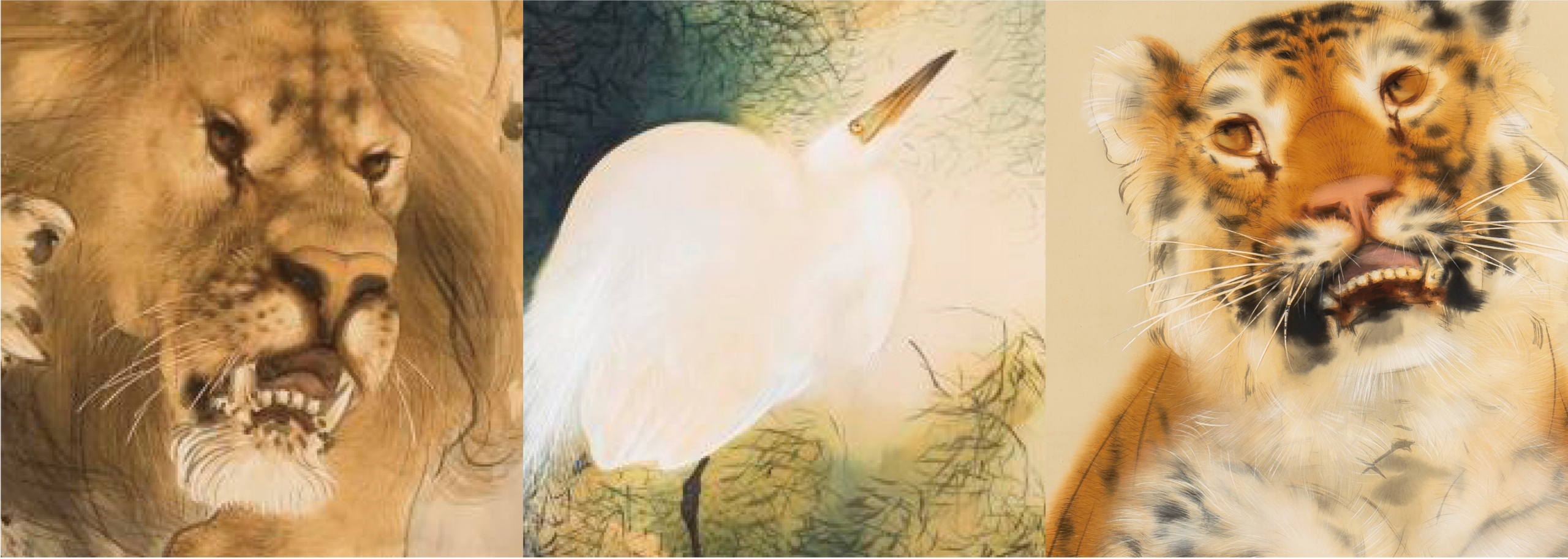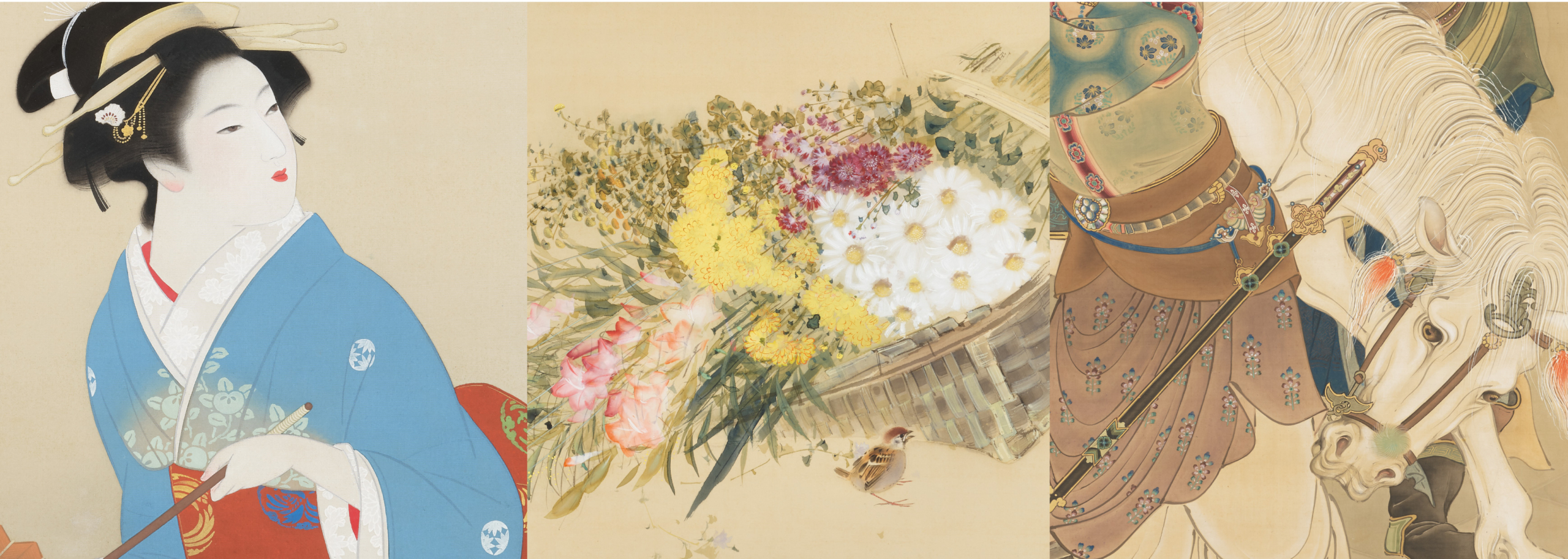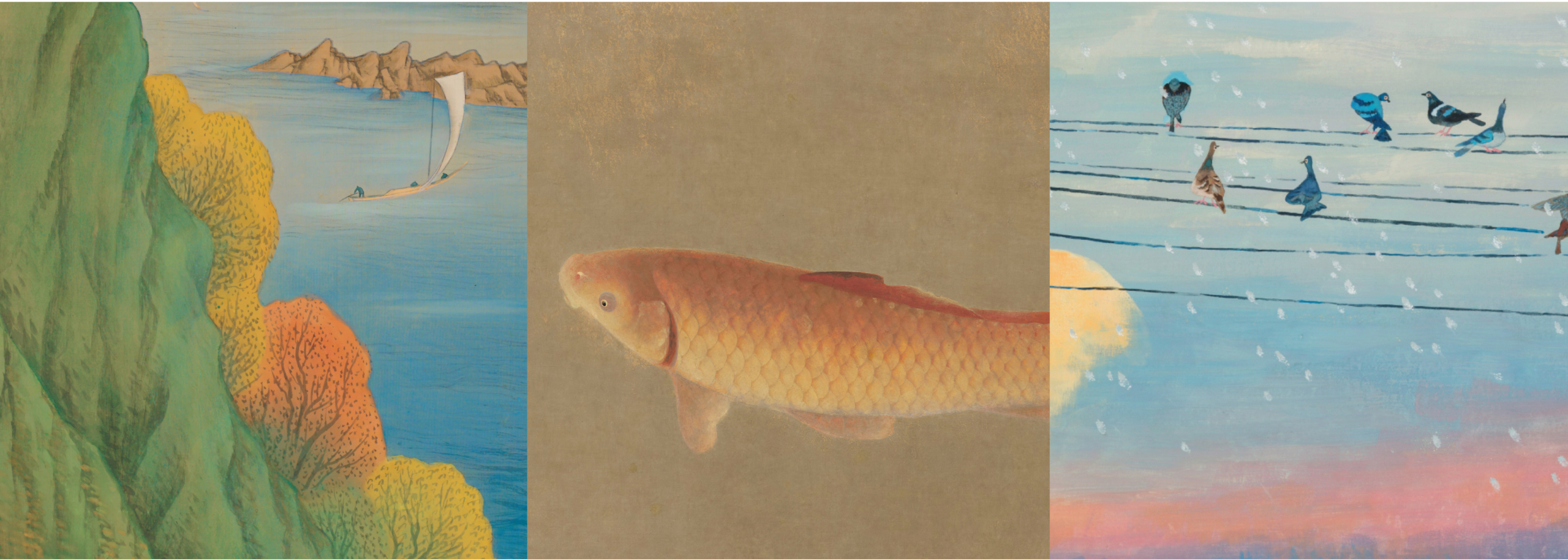Giant Steps Forward: Takeuchi Seihō and his Disciples
In early spring 2024, the Fukuda Museum of Art in Saga Arashiyama, Kyoto, will host an exhibition focusing on Takeuchi Seihō and his disciples to commemorate the 160th anniversary of his birth.
In Japanese art, Takeuchi Seihō (1864–1942) is a towering presence without peer. He is more than one of the greats: it is impossible to talk about modern-era painting in Kyoto and Japan without reference to Seihō. He was a consummate artist who set the direction for future Japanese-style painting. Drawing on the broad depth of the museum’s rich collection, which is especially rich in works from the early-modern and modern periods, this exhibition showcases the skill and vision of Seihō. You can see works by seniors from whom he learned, such as Kōno Bairei, whose example taught him to build up the skill and confidence required to make artistic leaps. Of course, the exhibition centers on signature paintings by Seihō. Each is a consummate image, often incorporating both Eastern and Western expression. We hope that you will agree that the paintings show the remarkable agility of Seihō, who acquired the freedom to express himself in any way he wanted. You can also see the influence of Seihō on painters who worked under his guidance, for example: Nishiyama Suishō, Uemura Shōen, Tsuchida Baksen, Murakami Kagaku, Irie Hakō, Fukuda Heihachirō, and Tokuoka Shinsen. Each painting demonstrates the outstanding skill and individuality of the artist. Shingeki in the Japanese title means outdoing rivals with a steady advance. And so it was, during the modern era from the mid-19th century to deep into the 20th century, that Seihō and his disciples made remarkable advances with decisively creative works. Even today, in 2023, amidst all the wealth of visual stimulation, their appealing paintings reward attention.

The first section of the exhibition introduces the history of the Kyoto painters since Maruyama Ōkyo and presents the works of Takeuchi Seihō, who perfected his own art by applying his own ingenuity to the techniques of his predecessors. The 26 works on display show the outstanding brushwork, compositional virtuosity and beauty of colour that were unique to Takeuchi Seihō, who was the greatest painter of his time and whose brilliance is still evident today. The realistic “Golden Lion”, painted using Western techniques, and other animal paintings by Seihō are among the highlights of the exhibition. The realism and expression of light that he created by actually travelling to Europe and sketching while observing the real thing breathed new life into the pre-war Kyoto.

The second section of the exhibition features works by outstanding pupils who followed Seihō’s lead, such as Nishiyama Suishō’s “Sunlight and Cherry Blossom”, which is being exhibited for the first time, as well as works by Uemura Shōen, Nishimura Goun and others. The reality is that the works of these artists, who early on sought a new way of painting Japanese-style paintings, did not receive excellent reviews at the official exhibitions. This chapter also includes works by members of the Kokuga Sōsaku Kyōkai [Association to Create a National Painting Style], a group formed by up-and-coming painters such as Ono Chikkyō, Tsuchida Bakusen and Murakami Kagaku, who were dissatisfied with the prestigious national Bunten exhibition’s evaluation, where Seihō was but one member of the judging panel. Doing what he could, Seihō acted as advisor to Kokuga Sōsaku Kyōkai and gave behind-the-scenes support to his daring young disciples’ forays into the art world. The exhibition reexamines the outstanding influence of Seihō, an educator who recognised and nurtured the individuality of these artists.

In the final section, you can view works by artists including Ono Chikkyō, Fukuda Heihachirō, Ikeda Yōson, and Tokuoka Shinsen, Seihō disciples who remained active in post-war Japan. At this time, there was a shift to maximizing the color and texture of mineral pigments by painting in thicker layers. In them, we can see how they continued Seihō’s advance from traditional values that lingered well into the early modern era. For Seihō, continuing the heritage of the master’s style had no importance at all. In this way, not only he, but those who learned from him, could rapidly make progress in an era when individuality became more important. Long after his death in 1942, Seihō’s spirit lived on.
Introduction Video on YouTube (in Japanese)
Exhibition Overview
| Title | Giant Steps Forward: Takeuchi Seihō and his Disciples |
|---|---|
| Dates |
January 18 (Thu.) – April 7 (Sun.) 2024 1st period: January 18 (Thu.) – March 4 (Mon.) 2024 |
| Opening Hours | 10:00〜17:00 (last entry 16:30) |
| Closed |
March 5 (Tue.) for changing the exhibition |
| Venue |
Fukuda Art Museum : 3-16 Susukinobabachō Saga-Tenryuji, Ukyō-ku, Kyoto |
| Entry Fee |
General / University student: ¥1,500 (¥1,400) * Prices in parentheses are for groups of 20 or more.
<Combo Tickets with Saga Arashiyama Museum of Arts & Culture> *If you purchase an online ticket of the Fukuda Art Museum, you will get a discount for the entry fee of the Saga Arashiyama Museum of Arts & Culture. Therefore, you can enter both museums as the same price of the combo ticket. |
